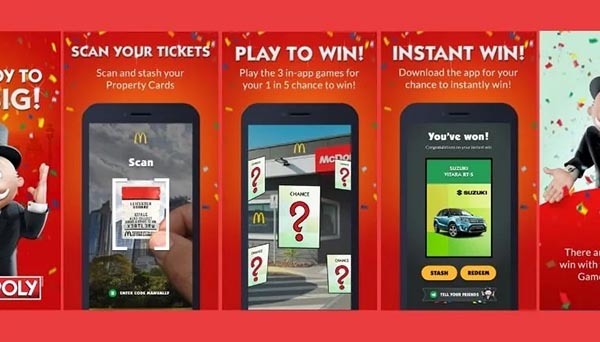If you want to grow your business, you can start by building an engaged audience. Whether your company is a startup, local business, or a global enterprise, creating engagement is crucial to your success for several reasons. Let’s take a look at some of them:
Why Creating Engagement is Important
Need help creating engagement? Let me know.
How to Build an Engaged Audience
By creating engaging experiences, companies can increase brand awareness, build customer loyalty, improve the customer experience, gain a competitive advantage, and increase sales. This can lead to long-term success and growth for the company.
Need to create engagement with your target audience? Here are some ways that a company's marketing team can create audience engagement:
Know Your Target Audience
First, understanding your target audience is crucial in creating engagement. It is essential to know their demographics, interests, and preferences so you can tailor your marketing messages accordingly. Here are some reasons why:
Build Engagement by Being Authentic
Authenticity is essential to creating engagement. Be real and honest with your audience. People appreciate transparency, and it builds trust.
Here's an example of a company being authentic to its audience:
Patagonia, an outdoor apparel company, has long been known for its commitment to environmental sustainability. The company has taken many steps to reduce its environmental impact, such as using recycled materials in its clothing, minimizing waste in its production process, and donating 1% of its sales to environmental causes.
In addition to these actions, Patagonia has also been authentic in its marketing messages. For example, the company once ran an advertisement that read "Don't buy this jacket" on Black Friday, one of the biggest shopping days of the year. The ad explained that the company didn't want people to buy things they didn't need and encouraged consumers to think about the environmental impact of their purchases.

This advertisement was a bold move for a company that relies on sales to stay in business. However, it resonated with Patagonia's target audience, who value environmental sustainability and authenticity. By being authentic in its messaging, Patagonia built trust with its audience and differentiated itself from other outdoor apparel companies.
Provide Value
To create engagement, you need to provide value to your audience. It could be in the form of informative blog posts, educational videos, or interactive webinars.
Engagement isn't about selling. Ultimately you want and need sales, but you'll have far more success if your audience likes you and comes to believe the information you provide is meaningful to their lives. And, times have changed. Years ago a webinar was a great way to get your audience together and tell them why they needed your product. It was, at its core, a sales presentation, and it worked.
Audiences today are more savvy, less trusting in the beginning, and don't want their time wasted. They don't want a sales pitch, and if that's what your livestream event is, they probably won't come back for the next one.

Instead, share information your audience can use. Of course it should relate to your business and your industry, but it should be useful on its own, to them. This is true of any content marketing medium, whether it's the webinar mentioned above, a blog article, or a video your company puts on YouTube.
Leverage Social Media to Engage Your Audience
Social media is an great way to engage with your audience. Share valuable content and encourage your followers to share their thoughts and opinions. One of the best features of social media is that it allows your business to have two-way dialog with consumers. Here are some reasons why that's an opportunity you shouldn't pass up:
Play With Gamification
Gamification is an innovative way to create engagement. It involves adding game-like elements to your marketing campaigns, such as rewards, challenges, and competitions. Today you may think of online challenges or competitions that solicit user-generated content with the promise of recognition or prizes. But gamification is a nice tool to build engagement in your brick and mortar locations too. Consider McDonalds:
In 2014, McDonald's launched a marketing campaign called "Peel to Win." The campaign used gamification to increase engagement and sales. The campaign involved customers peeling off game pieces from McDonald's food packaging to reveal a prize or discount.

The campaign had a mobile app that allowed customers to play a digital version of the game. Customers could scan the game pieces using the app, which would reveal additional prizes and discounts.
The game had a range of prizes, including free food, gift cards, and a chance to win a brand new car. The prizes were designed to incentivize customers to continue buying McDonald's food.
The "Peel to Win" campaign was a huge success for McDonald's. It increased engagement with customers and drove sales. The company reported a 5.7% increase in sales during the campaign period, and the mobile app was downloaded over 4 million times.
Overall, the "Peel to Win" campaign is an excellent example of how gamification can be used in marketing to increase engagement and sales. By adding game-like elements to their marketing campaigns, companies can create a fun and interactive experience for their customers and incentivize them to buy more products or services.
Create Engagement Through Personalization
Personalization helps create a connection with your audience. Use data to personalize your marketing messages, such as addressing your audience by name or recommending products based on their past purchases.
You can do this on your website, in emails, and by simply writing the user's name in your social media comments and responses. When you personalize your content, your audience will be become more engaged in measurable ways. Don't believe it? Consider these statistics:
Conclusion
If you want your business to succeed, creating an engaged audience is a valuable part of your marketing strategy. When you have it, your customers will be happier, your brand recognition will improve, and your name will generate trust.
Without these things, realizing the ultimate goal of more sales, sustainable over time, is far less likely.

